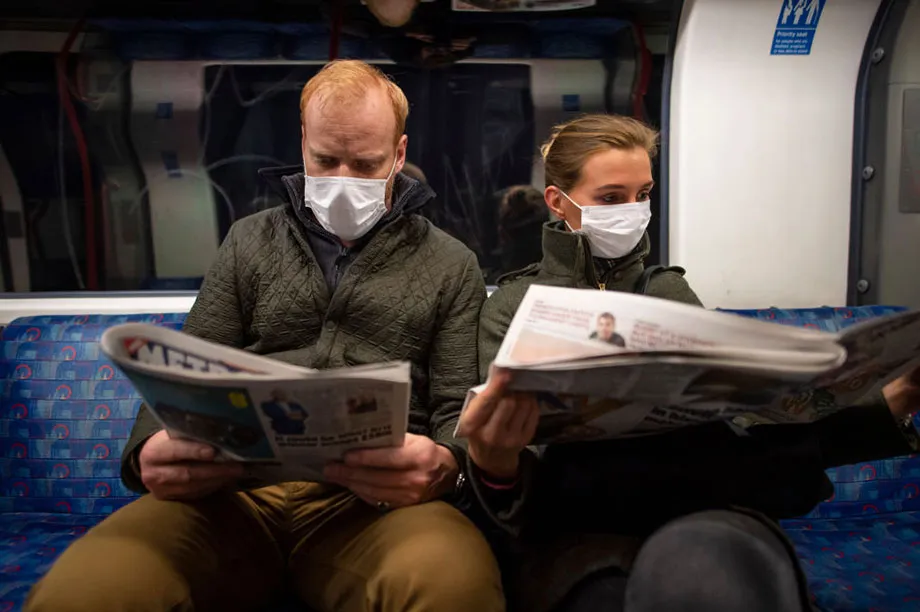Cases of COVID-19 are dropping in the UK, and lockdown restrictions are lifting. What comes next? Virologist Dr Jeremy Rossman explains everything you need to know about the future of coronavirus.
Will there be a second wave of COVID-19?
We will be facing COVID-19 for many months to come. We are still far from achieving herd immunity, where enough people have become infected (and therefore, it is hoped, immune) to halt the disease’s spread. It is also likely that we won’t have a vaccine for at least another 12 months.
As a result, we run a constant risk of a second peak in cases, especially as we ease lockdown restrictions. The key is to keep down the reproduction number R, which measures how many people a single infected person will pass on the disease to. At the peak of the UK outbreak, R was between 2 and 3. It has since dropped below 1, and will need to stay there if the virus is to be brought under control.
Two things will help achieve this: personal precautionary measures (e.g. keeping physical distance, hand-washing, wearing face coverings on public transport, avoiding crowded spaces), and public health interventions (e.g. testing, tracing and isolation).
As long as these precautions are in place, we can prevent any new outbreaks from ripping through the population. The aim is to be able to ride a gentler ebb and flow of cases until we have a vaccine.
Read more about COVID-19:
- Coronavirus vaccine: The race to create a cure for COVID-19
- Return to work: does COVID-19 mark the end of the office?
Will the spread of COVID-19 get worse in the winter?
Many other respiratory viruses (such as the flu) are seasonal, with more cases seen in the colder winter months, so it’s been suggested that the coronavirus SARS-CoV-2 could follow a similar pattern.
There has been a drop off in Northern Hemisphere cases as summer approaches, but this is likely to be due to the effectiveness of lockdown measures in many northern countries.
It’s possible that the weather does have a small effect: recent studies have shown that transmission of the virus decreases when the humidity increases (such as in the summer months).
But, so far, the outbreak doesn’t seem to be strongly tied to our seasons: the onset of the Southern Hemisphere winter, for example, has not caused increased transmission in Australia or New Zealand. So it looks like our individual and collective actions will play a much greater role in determining the trajectory of this pandemic.
What do we still not understand about the coronavirus?
Given that we only discovered this virus last December, our knowledge has advanced at an incredible pace. But there are still aspects of the virus that we don’t understand.
Firstly, immunity. In order to achieve herd immunity, 60-70 per cent of the population would need to become immune, either through infection and recovery, or through vaccination. Both options rely on our bodies producing protective proteins called antibodies in response to the virus.

The limited research at present says that infected people do generate antibodies, and that, in animals, the antibodies protect against the virus. However, we don’t know if all people who are infected or vaccinated will be protected by their antibodies, and we don’t know for how long protection will last.
Secondly, we don’t understand why the coronavirus has such varied effects in people, from no symptoms at all, to mild symptoms, to life-threatening illness. In some cases, this may be due to differences in ACE2 – an enzyme molecule that provides the entry point for the virus into our cells – but this is far from the whole story.
And thirdly, the virus is constantly mutating, but we don’t know how much these mutations will affect its functioning. Some of the mutations we’ve already seen may have enabled the virus to spread better, but, so far, there’s no evidence that it is getting more dangerous.
Will things ever go back to ‘normal’ after lockdown?
The ‘new normal’ has already become a cliché, but it’s true that we’re going to have to adjust to a new way of living for the foreseeable future. It’s likely that there will be some form of physical distancing, as well as a clampdown on mass gatherings, until a vaccine is available.
Factoring in the time for testing, manufacturing and distribution, this is likely at least 12 months away. In the meantime, governments will have to find the right balance between easing restrictions and protecting public health, while we do our bit as individuals by following the guidelines.
Read the latest coronavirus news:
- Social media use linked to believing coronavirus conspiracy theories
- Coronavirus: Vaccine researchers looking for trial volunteers
Are there reasons to be optimistic about COVID-19?
It’s a perfectly natural reaction to feel worried, anxious, sad or angry about this pandemic. It’s affected the lives and livelihoods of billions. But there are reasons for hope. At the time of going to press, there are 32 vaccine candidates for COVID-19, with nine already in clinical trials. Initial results in human and animal studies are promising, with some vaccines showing good safety and effectiveness.
We also now have a low-cost, readily-available drug, dexamethasone, which appears to significantly reduce the risk of death in COVID-19 patients who are on ventilators or on oxygen.
Slowly, life is moving back through the gears. Shops are opening, sports are returning, restrictions are being lifted. If there’s one take-home message, it’s that we are not at the mercy of this virus. In countries around the world, we are seeing that our collective actions can dramatically slow the spread of COVID-19. That’s one thing to bear in mind as we start to return to ‘normal’ life.
